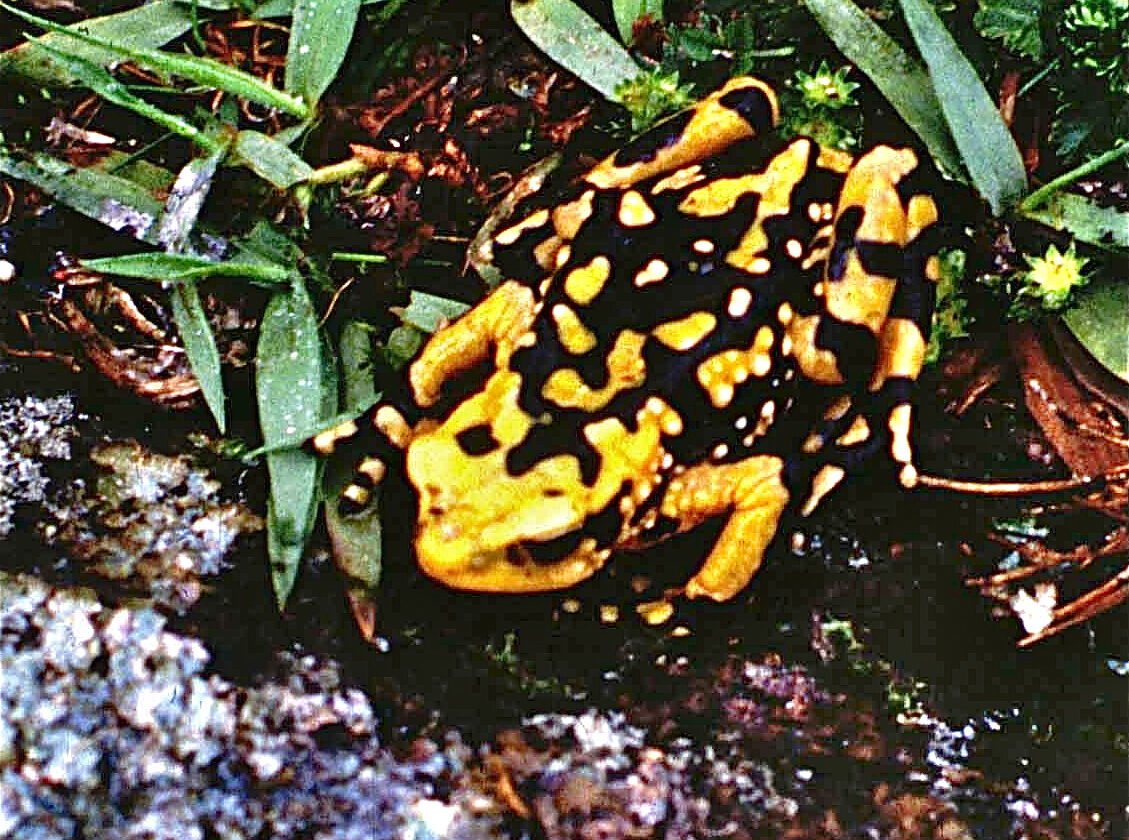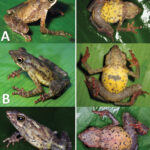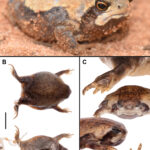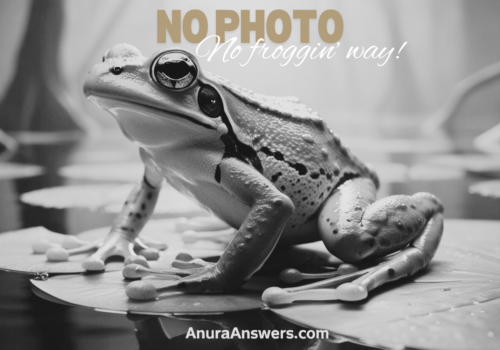- Introduction: A Jewel on the Brink
- Taxonomy and Classification
- Natural Habitat: Misty Realms of the Andes
- Physical Characteristics: Nature’s Exquisite Artistry
- Behavior and Life Cycle
- Ecological Role: A Vital Presence in a Delicate Balance
- Threats and Conservation Status: A Frog on the Edge
- Cultural and Scientific Significance
- Conclusion: Guardians of the Painted Harlequin
Introduction: A Jewel on the Brink#
Deep within the lush forests and cloud-shrouded slopes of the Andes Mountains, a small, vibrant creature calls attention to itself—not only through its dazzling colors, but also through the urgency of its existence. This is Atelopus petersi, known commonly as the Painted Harlequin Frog. The name alone evokes images of a whimsical, brightly patterned amphibian, yet its stunning appearance is overshadowed by a poignant story of survival against intensifying odds.
Amidst thick carpets of moss and mist-drenched vegetation, the vibrant blotches of yellow, orange, black, and green of Atelopus petersi contrast dramatically with the vast greenery, signaling danger to would-be predators through their striking aposematic coloration. But despite their colorful armor, these frogs are engaged in a losing battle against a multitude of threats, capturing the attention of scientists and conservationists alike as emblematic victims—and sentinels—of environmental change.
Taxonomy and Classification#
Before delving deeper into the remarkable life of Atelopus petersi, it’s important to establish its place within amphibian taxonomy. This species belongs to the Family Bufonidae, better known as the true toads. Specifically, this intriguing amphibian resides in the genus Atelopus, a diverse group of brightly colored amphibians native primarily to mountainous regions of Central and South America. This genus, colloquially known as the harlequin frogs or clown frogs, encompasses species renowned for their striking coloration patterns and sensitivity to ecological disruption.
The specific epithet, petersi, was formally assigned in honor of the influential German herpetologist Wilhelm Peters, whose extensive contribution to amphibian taxonomy laid foundational knowledge benefiting generations of researchers.
Natural Habitat: Misty Realms of the Andes#
The harlequin frog’s habitat is a scene of surreal beauty, captured within the mountainous ecosystems of Ecuador and northern Peru. Atelopus petersi resides predominantly at elevations ranging from 800 to 2,000 meters above sea level, areas consistently bathed in cloud cover and high rainfall, characterized by cool temperatures and mist-drenched foliage. Here, streams and rugged cascades weave intricate pathways through dense cloud forest canopies, creating damp habitats ideal for the frog’s delicate skin and unique biological needs.
This amphibian’s preference lies in the clear, shallow freshwater streams, where gentle currents oxygenate the waters and provide ideal breeding grounds. The dense vegetation serves both as protection, shielding these tiny creatures from predators, and as feeding grounds brimming with insects, spiders, and other arthropods central to their survival.
Physical Characteristics: Nature’s Exquisite Artistry#
Perhaps the most immediately captivating aspect of Atelopus petersi lies in their dazzling visual appeal. Adults typically measure between 3 to 5 centimeters long, with slender, graceful limbs adapted perfectly for climbing and hopping amidst the slippery moss-covered rocks and dense foliage. The frog’s bright coloration—dominant hues of brilliant yellow, lush green, and striking black—forms intricate, ornate patterns, uniquely varying from individual to individual, much like a living fingerprint.
These colors, far from mere ornamental traits, perform a crucial ecological function as warnings to potential predators. Atelopus petersi secretes toxins through its skin, a survival adaptation that discourages consumption from birds, mammals, and reptiles. The markings therefore serve as an unmistakable visual alarm indicating toxicity, a strategy that’s remarkably effective within their biodiverse home.
Behavior and Life Cycle#
Feeding and Daily Activity#
Painted harlequin frogs are primarily diurnal, active during daylight hours when streams of sunlight pierce through the dense cloud forest canopy. During these times, they meticulously hunt, feeding predominantly on insects such as ants, beetles, flies, and small spiders. Their sharp vision and keen reflexes allow them to grasp rapidly moving prey with remarkable accuracy, making each feeding session a display of precise, patient efficiency.
Mating Rituals and Reproduction#
In the rainy season, the serene whispers of forest streams become backdrop to a chorus of melodic calls as male Atelopus petersi frogs serenade potential mates. Positioned atop rocks or branches near the water, males produce subtle yet distinctive mating calls to attract females. Upon pairing, females lay gelatinous egg strings attached to submerged rocks, a carefully chosen nursery that takes advantage of clean, oxygen-rich water flowing gently downstream. The vigorous, tadpole stage that follows undergoes remarkable metamorphosis, transitioning into fully formed juvenile frogs ready to face both the wonders and dangers of their ecosystem.
Unique Defense Strategies#
Beyond striking colors and toxic secretions, Atelopus petersi exhibits remarkable defensive behavior when confronted by potential threats. Rather than immediate flight, these creatures may adopt distinctive stiff-legged postures, boldly displaying their vibrant underbellies while secreting a milky, distasteful toxin. This daring method of defense exemplifies their reliance upon chemical protections, juxtaposed against the delicate conditions necessary for their thriving.
Ecological Role: A Vital Presence in a Delicate Balance#
Atelopus petersi serves as a critical ecological component within its habitat. Primarily insectivorous, this frog effectively helps control populations of small arthropods, maintaining delicate ecological balances that, left unchecked, could significantly impact their ecosystem. Additionally, as prey for specialized predators capable of overcoming their toxin defenses, these frogs contribute to the complex food webs shaping forest biodiversity.
Importantly, their sensitivity to environmental disruption positions them as indicators—“canaries in the coalmine”—whose decreasing populations signal deeper ecological turmoil, alerting scientists and conservationists to underlying threats such as climate change, disease outbreaks, or habitat disturbance.
Threats and Conservation Status: A Frog on the Edge#
Atelopus petersi is currently listed as “Critically Endangered” by the International Union for Conservation of Nature (IUCN). The grim designation is not lightly given; this species faces existential threats primarily from habitat destruction, global climate shifts, and particularly from the devastating chytrid fungus (Batrachochytrium dendrobatidis), a pathogen causing widespread amphibian declines worldwide.
Deforestation and agricultural expansion dissect their fragile habitats, fragmenting populations and hindering their ability to migrate and reproduce. Climate-related disruptions further exacerbate habitat unpredictability, altering rainfall patterns and temperatures necessary to their reproductive success.
Worldwide, conservationists are working tirelessly conducting surveys, establishing captive breeding programs, and advocating for improved habitat protection to strengthen wild populations. The resilience of this species remains intertwined with humanity’s collective responsibility to preserve the biodiversity and ecological integrity of the Andes.
Cultural and Scientific Significance#
Culturally, Atelopus petersi symbolizes the vibrant uniqueness and biological wealth of Ecuador and Peru. It is frequently highlighted in local folklore and conservation education as a symbol of ecological fragility and the urgency of conservation.
From a scientific perspective, research involving the chemical composition and potential medicinal uses of harlequin frog toxins presents exciting opportunities. Compounds derived from these striking creatures have been studied for potential applications in biomedicine, offering intriguing paths for future research.
Conclusion: Guardians of the Painted Harlequin#
Atelopus petersi embodies a paradoxical tale of vibrant life and looming fragility. As we marvel at their exquisite patterns, fascinating behaviors, and cherished ecosystems, we find ourselves grappling with pivotal questions of environmental responsibility and the steps humanity must take to safeguard not only the harlequin frog but the entire rich tapestry of life in the Andes.
Conservation action becomes our shared moral imperative. Whether through supporting habitat conservation efforts, advocating for policies addressing climate change, or simply sharing awareness about these remarkable amphibians, each effort brings us closer to securing a hopeful future, where the vivid colors of the painted harlequin frog continue to gleam, undimmed and vibrant among the mists of their lush Andean home.







